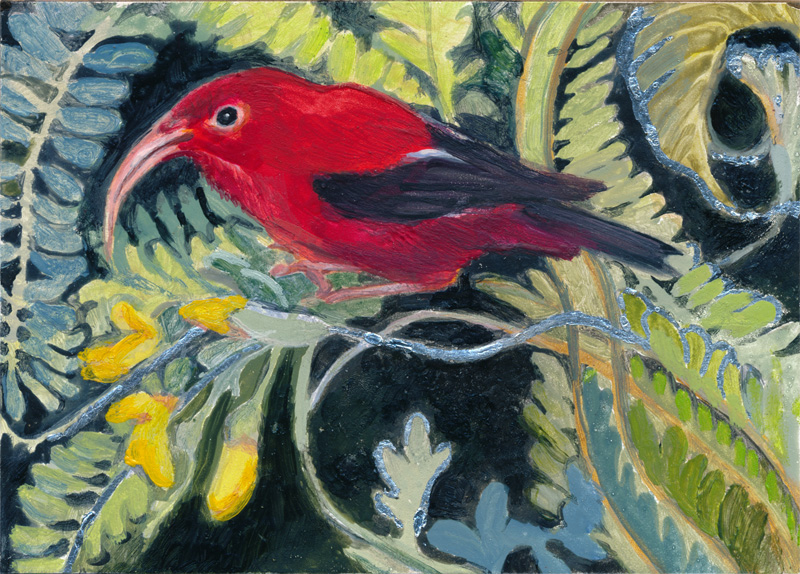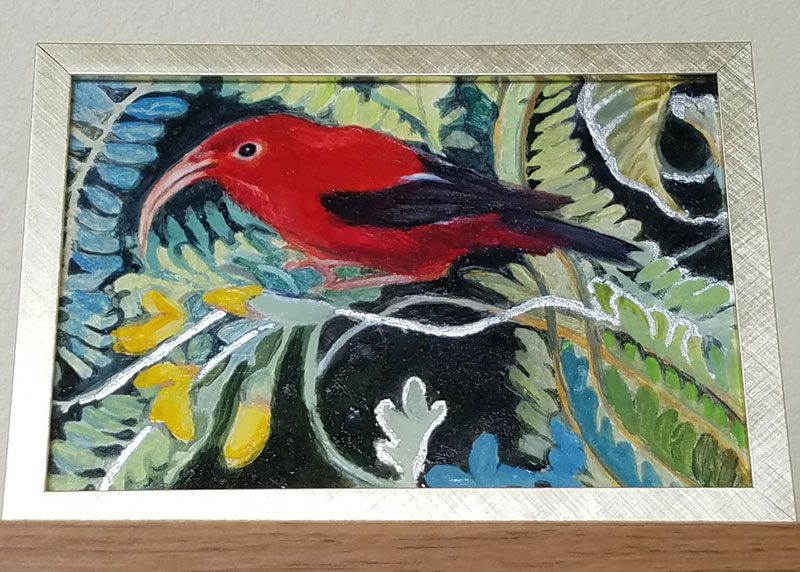
5 x 7 inches
egg tempera and aluminum leaf on panel
Sold

This is one of a series of Illuminated Hawaiian birds, this time I chose to paint the i’iwi. They can be seen shyly flitting through the treetops at Volcano National Park. You can hear their metallic calls better than you can see their vibrant red-orange feathers and black wings because they are constantly on the move. Those beautiful salmon-pink curved beaks are the result of co-evolution with lots of curved flowers, including lobelia. Here I have placed the i’iwi with mamane, a yellow pea-like flower cluster on a small lacy-leaved tree. I painted this bird with egg tempera, the traditional medium of long-ago Europe. I usually prefer oil paints, but I wanted to work with tempera this time to create the gem-like glow of the red feathers in translucent tempera layers. I am using these elements of old illumination in conjunction with native birds, to signal that they are our modern-day treasures.
Illuminated manuscripts were intricately illustrated books prior to the printing press. They were painstaking work hundreds of years ago, decorated with precious metals and rare pigments. With no automation, you might be able to imagine how expensive and difficult it would be to procure pigments (sometimes made from actual jewels like lapis lazuli or with natural materials that took hours to process into vivid inks). Now also, you must remember that metal leaf had to be smelted and hammered into thin sheets by hand. Even the parchments and the glues that supported the work was something that must be made by hand with hours of time. All of this labor was done amidst pre-industrial times when it took many hours of labor just to put food on the table and assure survival for each family. This type of decoration was reserved for only the most important books. I am referring back to this style of art to equate the care that had to be taken in saving the early ideas within these manuscripts with the care we must utilize today to preserve our rare ecosystems and our endangered species. To see these beautiful places in person is to realize that they are worth care and time. I also hope to make them familiar to you so that if you ever see one of these endemic birds or plants, you will recognize them and know what an amazing gift it was to see one in person.